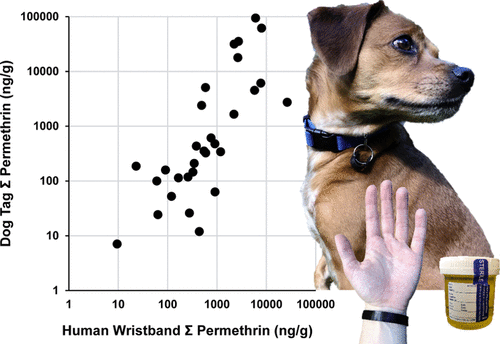It’s not news that dogs save lives. 80 million Americans have the companionship of service dogs. The simple act of petting a dog can lower our blood pressure in times of stress and anxiety. Heroic pets have saved people from drowning, saved babies, and more. Some of our dogs even to start to resemble us, or vice versa. In June 2020, National Geographic highlighted yet another bond that dogs and humans share and that can save our lives – “Since dogs are much like us, and share the same living space, scientists conducted the first investigation into how industrial chemicals impact humans and pet dogs living in the same household.”
According to a recently published research study, “Dogs provide valuable insights as sentinels for exposure-related human disease because they share similar exposures in the home, have shorter life spans, share many clinical/biological features, and have closely related genomes.”
The research, which involved dogs wearing silicone dog tags and humans wearing wristband counterparts, indicated that both humans and dogs experience similar biomarkers to common household chemical contaminants such as pesticides, flame retardants, and plastics. Based on the foundation that dogs share our living spaces thoroughly, the kinds of materials over prolonged exposure that have led to chronic diseases and that are difficult to identify early-on, start showing in our dogs sooner than they are noticeable in humans. Because dogs experience similar biomarkers and manifest these effects, researchers propose that there should be more studies on this health relationship between humans and their furry friends to further understand the exact impacts and chronic illnesses household toxins have in our bodies.

It’s widely understood that we’re carrying within us the chemicals we bring into our homes, and that this has consequences we haven’t even begun to fully realize yet. Some substances, like microplastics, are so widespread that they are found everywhere we think to look. We don’t know yet to what extent these plastics and toxins impact our health, but we now see evidence that these materials are manifesting similarly in both humans and our closest companions. Identifying how both our immune systems and bodies are responding to our other household residents – plastics, toxins, and chemicals – is the first step in learning how we can ensure a toxic-free environment for ourselves and our loved ones.

 Food
Food Farmers
Farmers Sustainable Living
Sustainable Living Living Planet
Living Planet News
News